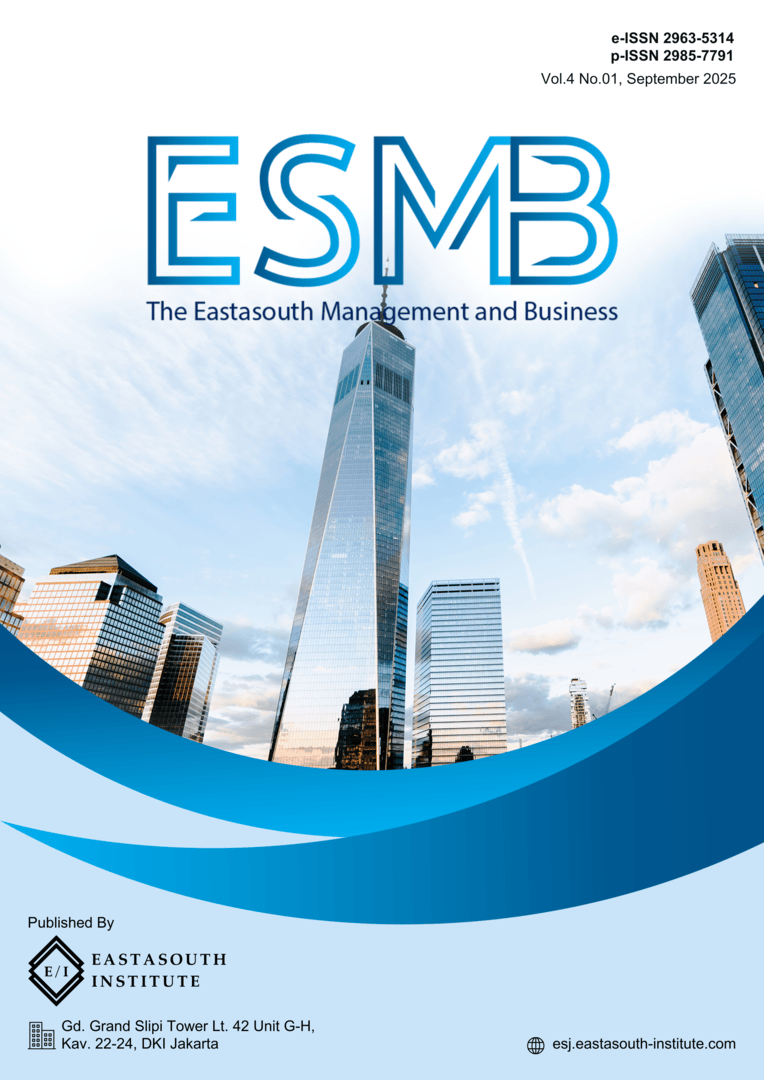The Role of Green HRM in Mediating the Influence of Leadership on Employee Performance at Hotel in Kuta
Main Article Content
Abstract
This study aims to determine the influence of leadership on employee performance as mediated by Green HRM. Green HRM is an approach to human resource management that integrates environmentally friendly practices to support organizational sustainability and reduce negative environmental impacts. This study utilizes Social Exchange Theory (SET) and Self-Determination Theory (SDT) to provide a perspective on how the relationship between a company and its employees influences their performance outcomes. This quantitative study employed a survey method with questionnaires and closed-ended triangulation interviews. The study was conducted in five star-rated hotels that have implemented Green HRM, with a sample of 91 registered employees. Data analysis used path analysis.
Article Details

This work is licensed under a Creative Commons Attribution-ShareAlike 4.0 International License.
References
W. Safitri, “Pengaruh Kepemimpinan Terhadap Kepuasan Kerja Dengan Disiplin Sebagai Variabel Mediasi (Survey pada Karyawan Grage Hotel & Spa Kuningan).” Universitas Kuningan, 2024.
S. Batubara, E. Matondang, G. Nadeak, and S. Pratiwi, “Green human resource management: a model of determinants and its impact on the performance of higher education institutions,” Nusant. J. Soc. Sci., vol. 10, no. 10, pp. 4739–4750, 2023.
M. Darvishmotevali and L. Altinay, “Green HRM, environmental awareness and green behaviors: The moderating role of servant leadership,” Tour. Manag., vol. 88, p. 104401, 2022.
A. A. C. Manika Dewi, I. H. H. Sihombing, and K. A. D. Pratiwi, “Pengaruh Gaya Kepemimpinan Terhadap Kinerja Karyawan Di Hotel Canggu Dream Village,” J. Bisnis Hosp., vol. 12, no. 2, pp. 91–101, 2024, doi: 10.52352/jbh.v12i2.1185.
J. Dumont, J. Shen, and X. Deng, “Effects of green HRM practices on employee workplace green behavior: The role of psychological green climate and employee green values,” Hum. Resour. Manage., vol. 56, no. 4, pp. 613–627, 2017.
S. Effendi, F. Faruqi, M. Mustika, and R. Salim, “The Influence of Sales Promotion, Electronic Word of Mouth and Hedonic Shopping Motivation on Impulsive Buying on the Shopee Application,” J. Account. Manag., vol. 17, no. 02, pp. 22–31, 2020.
I. Fauzi, “Pengaruh Kepemimpinan dan Motivasi Terhadap Kinerja Karyawan,” Manag. Anal. J., vol. 1, no. 1, 2012.
N. Fitri, H. Basri, and F. Arifin, “The Influence Of Leadership Style On Employee Performance With Work Discipline As An Intervening Variable At PT. Bank Syariah Indonesia Kanca Palembang,” EKOMBIS Rev. J. Ilm. Ekon. dan Bisnis, vol. 13, Dec. 2024, doi: 10.37676/ekombis.v13i1.6726.
B. M. Bass and B. J. Avolio, Transformational Leadership and Organizational Culture. 1993.
E. L. Kabdiyono, D. H. Perkasa, M. Ekhsan, M. A. F. Abdullah, and W. D. Febrian, “Kepemimpinan, Beban Kerja dan Burnout terhadap Kinerja Karyawan Perusahaan Garment di Kabupaten Tangerang,” J. Manag. Bussines, vol. 6, no. 2, pp. 496–509, 2024.
A. Rika Mandasari, T. Yunita, and F. Ekonomi dan Bisnis Universitas Bhayangkara Jakarta Raya, “the Influence of Engaging Leadership, Green Hrm, and Organizational Culture on Employee Productivity At Pt. Xyz in Bekasi,” COSTINGJournal Econ. Bus. Account., vol. 7, no. 3, 2024.
P. M. Blau, Exchange and Power in Social Life. Wiley, 1964.
G. Wijonarko and A. Wirapraja, “Pengaruh Green Human Resource Management Terhadap Peningkatan Kepuasan Kerja dan Produktivitas Karyawan Melalui Perspektif Technology Acceptance Model (TAM),” KONSTELASI Konvergensi Teknol. dan Sist. Inf., vol. 2, no. 1, pp. 13–22, 2022, doi: 10.24002/konstelasi.v2i1.5545.
M. Guruh, I. Syatoto, and A. Razak, “Pengaruh Kepemimpinan Terhadap Kinerja Karyawan Pada Pt. Kirana Mitra Abadi Tangerang,” J. Arastirma, vol. 1, Feb. 2021, doi: 10.32493/arastirma.v1i1.10064.
M. Gyensare and S. Adomako, “Green HRM practices, employee well‐being, and sustainable work behavior: Examining the moderating role of resource commitment,” Bus. Strateg. Environ., vol. 33, pp. 3129–3141, Dec. 2023, doi: 10.1002/bse.3642.
Central Statistics Agency of Bali Province, “Number of Star-Rated Hotels by Class and Regency/City in Bali Province, 2000–2023,” 2024. https://bali.bps.go.id/id/statistics-table?subject=561&title=tourism.html&utm_source=chatgpt.com (accessed Apr. 09, 2025).
W. W. Chin, “The partial least squares approach to structural equation modeling,” Mod. methods Bus. Res., vol. 295, no. 2, pp. 295–336, 1998.
N. Darna and E. Herlina, “Choosing the Right Research Method for Research in Management Science,” J. Manag. Sci. Econology, vol. 5, no. 1, pp. 287–292, 2018.
M. S. D. Duryadi, “Metode Penelitian Empiris, Model Path Analysis dan Analisis Smart PLS,” Semarang: Yayasan Prima Agus teknik, STEKOM. p. 147, 2021.
C. Fornell and D. F. Larcker, “Evaluating structural equation models with unobservable variables and measurement error,” J. Mark. Res., vol. 18, no. 1, pp. 39–50, 1981.
E. L. Deci and R. M. Ryan, Intrinsic motivation and self-determination in human behavior. Springer, 1985.

